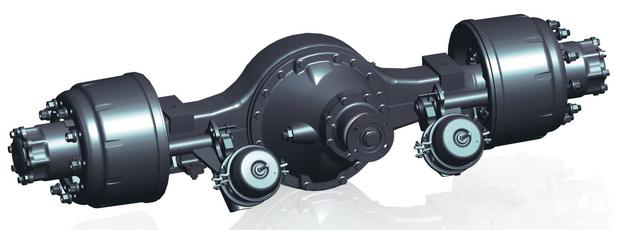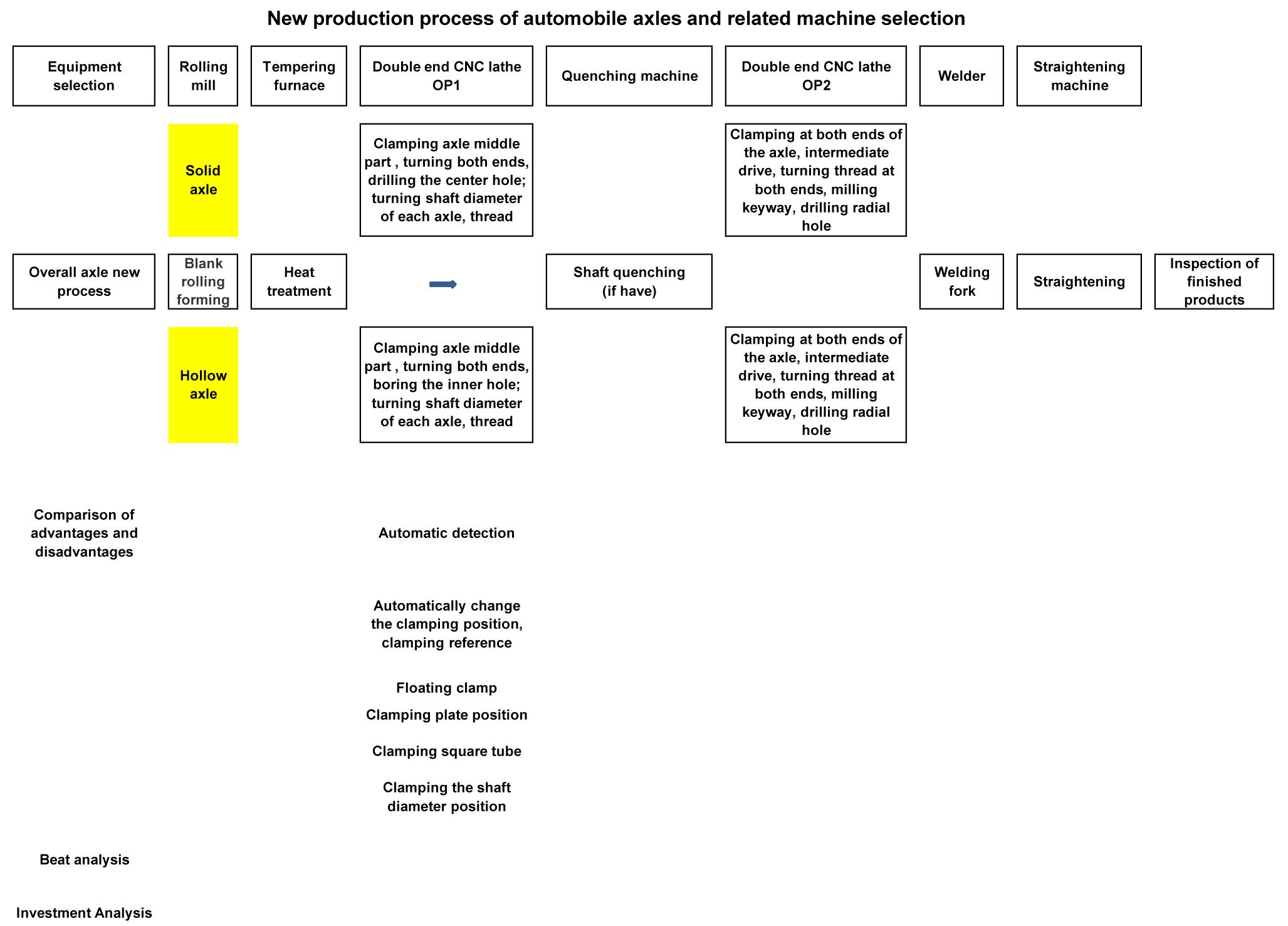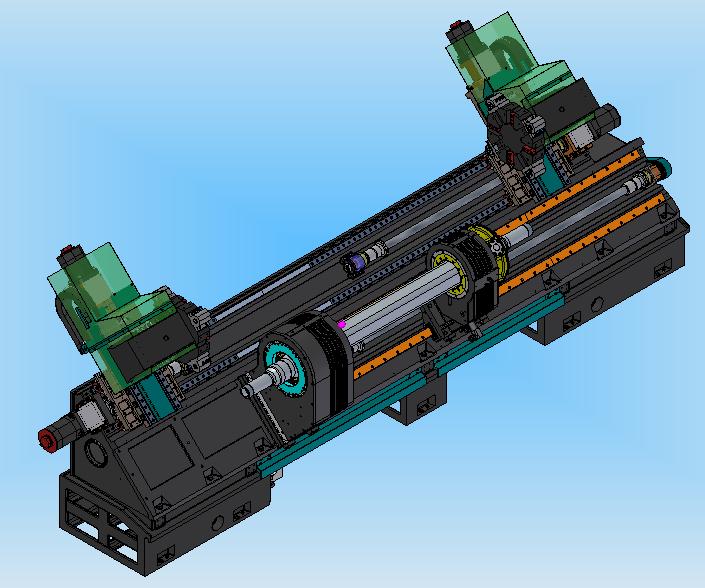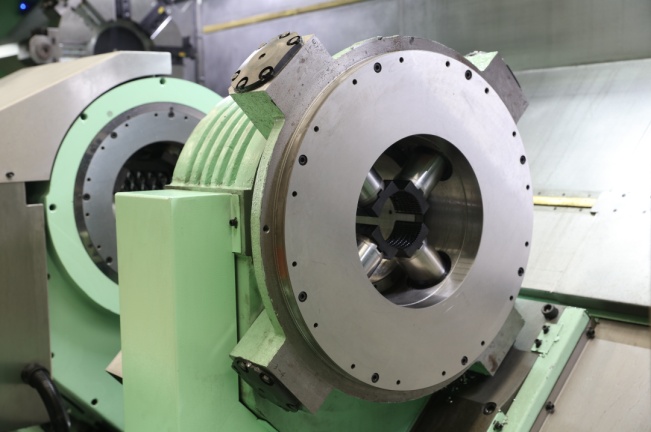The axles with wheels on both sides of the undercarriage (frame) are collectively referred to as automobile axles, and the axles with driving capabilities are generally called axles. The main difference between the two is whether there is a drive in the middle of the axle (axle). In this paper, the automobile axle with the drive unit is called the automobile axle, and the vehicle without the drive is called the automobile axle to show the difference.
With the increasing demand for logistics and transportation, the superiority of automobile axles, especially trailers and semi-trailers, in professional transportation and special operations is becoming more and more obvious, and the market demand has increased significantly.
This technology analysis the machining process of the axle, hope to help customers to choose more suitable CNC machine.


The new production process of the automobile overall axle:

From the new production process, the milling machine used for machining (solid axle) or double-sided boring machine (hollow axle) plus CNC lathe, traditional OP1 milling, OP2, OP3 turning sequence, and even OP5 drilling and milling It can be replaced by the double-end CNC lathe OP1.
For solid axles where the shaft diameter does not require quenching, all the machining contents can be completed in one setup, including milling key grooves and drilling radial holes. For hollow axles where the shaft diameter does not require quenching, the automatic conversion clamping standard can be realized in the machine tool, and the machining content can be completed by one machine tool.
Choose double-end axle special CNC lathes to machine the axles significantly shortens the machining route, and the type and quantity of selected machine tools will also be reduced.
The advantage and feature of the new process selection machine:
1) Concentration of the process, reducing the times of workpiece clamping, reducing the auxiliary processing time, using the simultaneous processing technology at both ends, the production efficiency is significantly improved.
2) One-time clamping, simultaneous processing at both ends improves the machining accuracy and coaxiality of the axle.
3) Shorten the production process, reduce the turnover of parts on the production site, improve the efficiency of the use of the site, and help improve the organization and management of production.
4) Due to the use of high-efficiency processing equipment, it can be equipped with loading and unloading devices and storage devices to achieve fully automated production and reduce labor costs.
5) The workpiece is clamped at the intermediate position, the clamping is reliable, and the torque required for the cutting of the machine tool is sufficient, and the large amount of turning can be performed.
6) The machine tool can be equipped with automatic detection device, especially for the hollow axle, which can ensure the uniform thickness of the axle after machining.
7) For hollow axles, when the inner holes at both ends of the OP1 sequencer are finished, the traditional customer will use one end to raise the clamp and the other end to use the tailstock to tighten the workpiece for turning, but the size of the inner hole is different. For the smaller inner hole, the tightening rigidity is insufficient, the top tightening torque is insufficient, and efficient cutting cannot be completed.。
For the new double-face lathe, the hollow axle, when the inner holes at both ends of the vehicle are finished, the machine automatically switches the clamping mode: the two ends are used to tighten the workpiece, and the middle drive floats the workpiece to transmit torque.
8) The headstock with built-in hydraulic clamping workpiece can be moved in the Z direction of the machine. The customer can hold the position in the middle square tube (round tube), the bottom plate position and the shaft diameter position of the axle as needed.
Conclusion:
In view of the above situation, the use of double-end CNC lathes to machine automobile axles has significant advantages over traditional processes. It is an advanced manufacturing technology that can replace traditional machine tools in terms of production process and machine structure.


Post time: Mar-15-2021






